Affiliate links on Android Authority may earn us a commission. Learn more.
Google Pixel 4 vs Pixel 3 vs Pixel 3a: Which Google phone is right for you?
2019 saw the release of two sets of Google Pixel phones for the first time in a calendar year. First we got the Google Pixel 3a and 3a XL — the first budget Pixels from the search giant — and then came the true successor to 2018’s Pixel 3 series — the Google Pixel 4 and Pixel 4 XL.
We’ve already compared the Pixel 4 duo with the Android competition at large, but how do all of Google’s recent phones compare today? Is the Pixel 4 a true upgrade? Is the freshly reduced Pixel 3 a better bet? Could you save even more cash and grab a Pixel 3a? Find out in this Pixel 4 vs Pixel 3 vs Pixel 3a comparison!
We’ll be referring mostly to the smaller, vanilla Pixel models throughout this versus. Most of the comparison points also apply to the XL range, but we’ll highlight any significant differences where applicable.
Pixel style, refined
Google Pixel 4
- 147.1 x 68.8 x 8.2mm
- 162g
- Just Black, Clearly White, Oh So Orange
Google Pixel 3
- 145.6 x 68.2 x 7.9mm
- 148g
- Just Black, Clearly White, Not Pink
Google Pixel 3a
- 151.3 x 70.1 x 8.2mm
- 147g
- Just Black, Clearly White, Purple-ish
The Pixel range has had a consistently smart yet unassuming look ever since the Pixel 2, but the Pixel 4 made some welcome tweaks to the formula. Instead of the dual-tone glass back, the Pixel 4 has a single frosted glass panel with a matte finish (glossy in Just Black) and a black, metal frame. The Pixel 3a, meanwhile, has a polycarbonate rear but still feels remarkably premium.
All three Pixel models come in three colors. Just Black and Clearly White are the default Pixel colorways, but each has its own special edition too with appropriately quirky names. The Pixel 4 comes in Oh So Orange, the Pixel 3a in Purple-ish, and the Pixel 3 is available in Not Pink. Many of the colorways also come with accented power buttons with varying shades of orange (or green).
Bezels are slowly being eradicated from most smartphones but Google is lagging behind a bit. The Pixel 3a has the largest bezels of the bunch, but it’s perhaps more preferable than the humongous “bathtub” notch on the Pixel 3 XL (mercifully not on the regular Pixel 3). Things get even weirder for the Pixel 4 as instead of opting for a punch hole or pop-up, Google stuck with a larger top bezel and filled it with a smorgasbord of sensors.
Biometrics, 90Hz displays, and Soli
Google Pixel 4
- 5.7-inch Full HD+ OLED
- 2,280 x 1,080 pixels, 444ppi
- 19:9 aspect ratio, adaptive 90Hz refresh rate
- Gorilla Glass 5
Google Pixel 3
- 5.5-inch Full HD+ OLED
- 2,160 x 1,080 pixels, 443ppi
- 18:9 aspect ratio
- Gorilla Glass 5
Google Pixel 3a
- 5.6-inch Full HD+ OLED
- 2,220 x 1,080 pixels, 441ppi
- 18.5:9 aspect ratio
- Dragontrail Glass
The sensor array on the Pixel 4 enables Google’s take on 3D face unlock technology. We’ve seen attempts at hardware-based facial biometrics before but Google’s is easily the best Android has to offer and is lightning fast and incredibly accurate. That said, it’s a shame there’s no in-display fingerprint sensor or a rear mounted scanner like on the Pixel 3 and 3a as many apps are playing catch up to include face unlock as a security option. It’ll also be even better (and less creepy) when it knows when your eyes are shut.
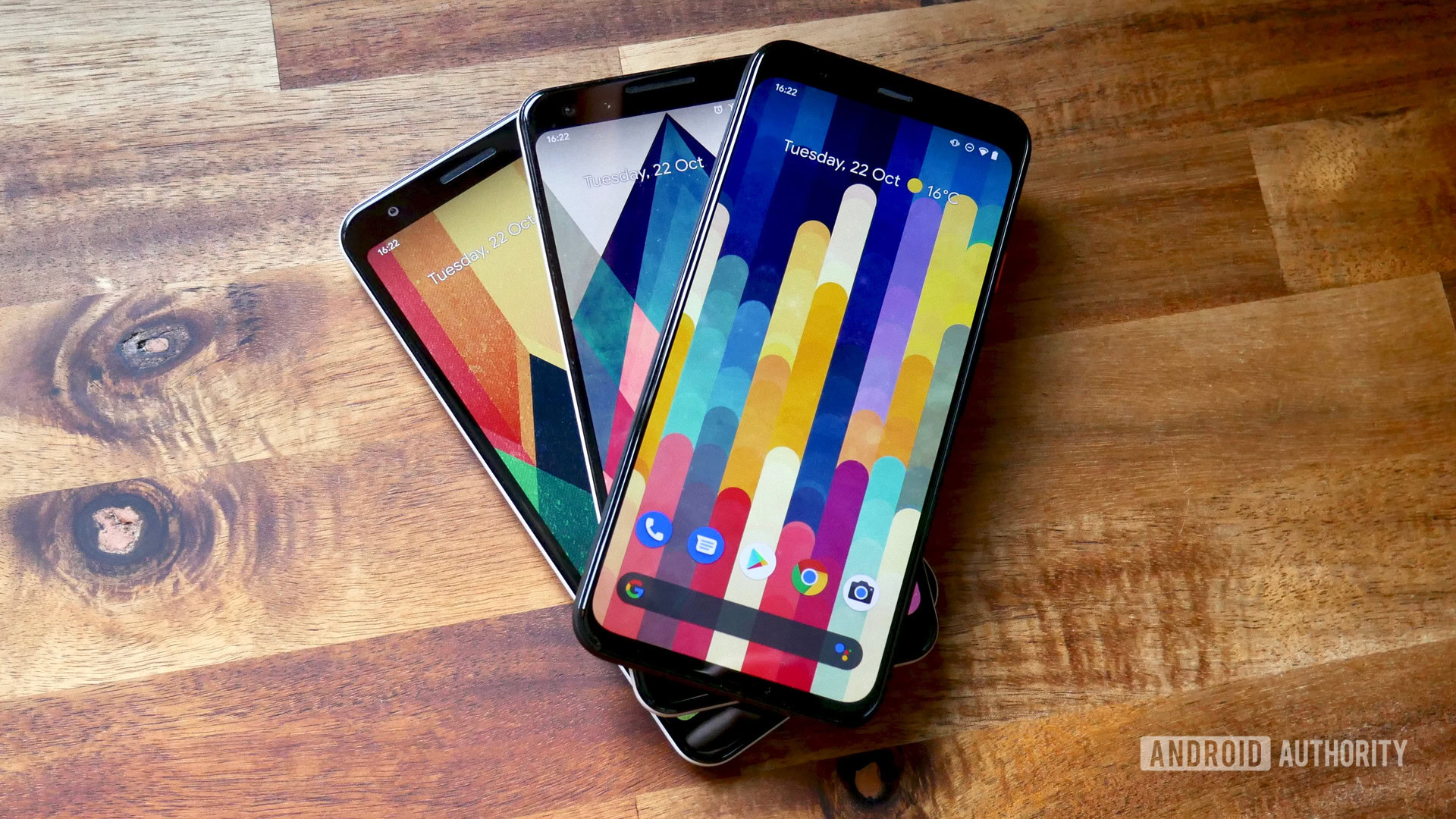
Among the many sensors in the phone’s chin is a Soli radar chip, which is the Pixel 4’s big gimmick. This enables faster face unlock as the radar senses your approach, and it also powers the phone’s Motion Sense suite, which is a fancy name for some wildly inconsistent hands-free gestures. Google has promised more functionality in the future, but for now Soli isn’t a great reason to pick the Pixel 4 over its predecessors.
Soli isn’t a killer app.
What is perhaps worth the upgrade, however, is the Pixel 4’s 90Hz pOLED display. Google doesn’t have the best track record with its Pixel displays, but this Samsung-made panel is a stunner. Unfortunately, the higher refresh rate feature is a little buggy at the time of writing due to a bizarre brightness limitation. A fix is expected soon.
Each of the regular Pixel phones run at a 1080p resolution while the Pixel 3 XL and Pixel 4 XL get bumped to QHD+. The good news is that even the budget Pixel 3a has an OLED display, so you’ll be seeing deep blacks no matter your budget.
Pixel power
Google Pixel 4
- Qualcomm Snapdragon 855
- 6GB RAM
- 64GB or 128GB storage
- Adreno 640
Google Pixel 3
- Qualcomm Snapdragon 845
- 4GB RAM
- 64GB or 128GB storage
- Adreno 630
Google Pixel 3a
- Qualcomm Snapdragon 670
- 4GB RAM
- 64GB storage
- Adreno 615
On the raw specs front, the Pixel 4 finally sees Google add more RAM, finally jumping from 4GB to 6GB. This appears to have solved the aggressive RAM management issues that plagued the Pixel 3 as apps will stay open a lot longer on the Pixel 4. It also gets a boost from Qualcomm’s powerful Snapdragon 855 chipset which represents a processing leap of around 30% from the Pixel 3’s Snapdragon 845.
Read more: Qualcomm Snapdragon 855 vs 845: Worth the upgrade?
Of all the Pixel phones, the Pixel 4 is clearly the device of choice for mobile gamers though it’s a shame we didn’t get the Snapdragon 855 Plus with its improved graphics performance. While the Pixel 3’s set-up still performs well enough, the Pixel 3a struggles with intensive 3D games on higher settings. Thankfully, the Snapdragon 670 handles regular day-to-day like a champ.
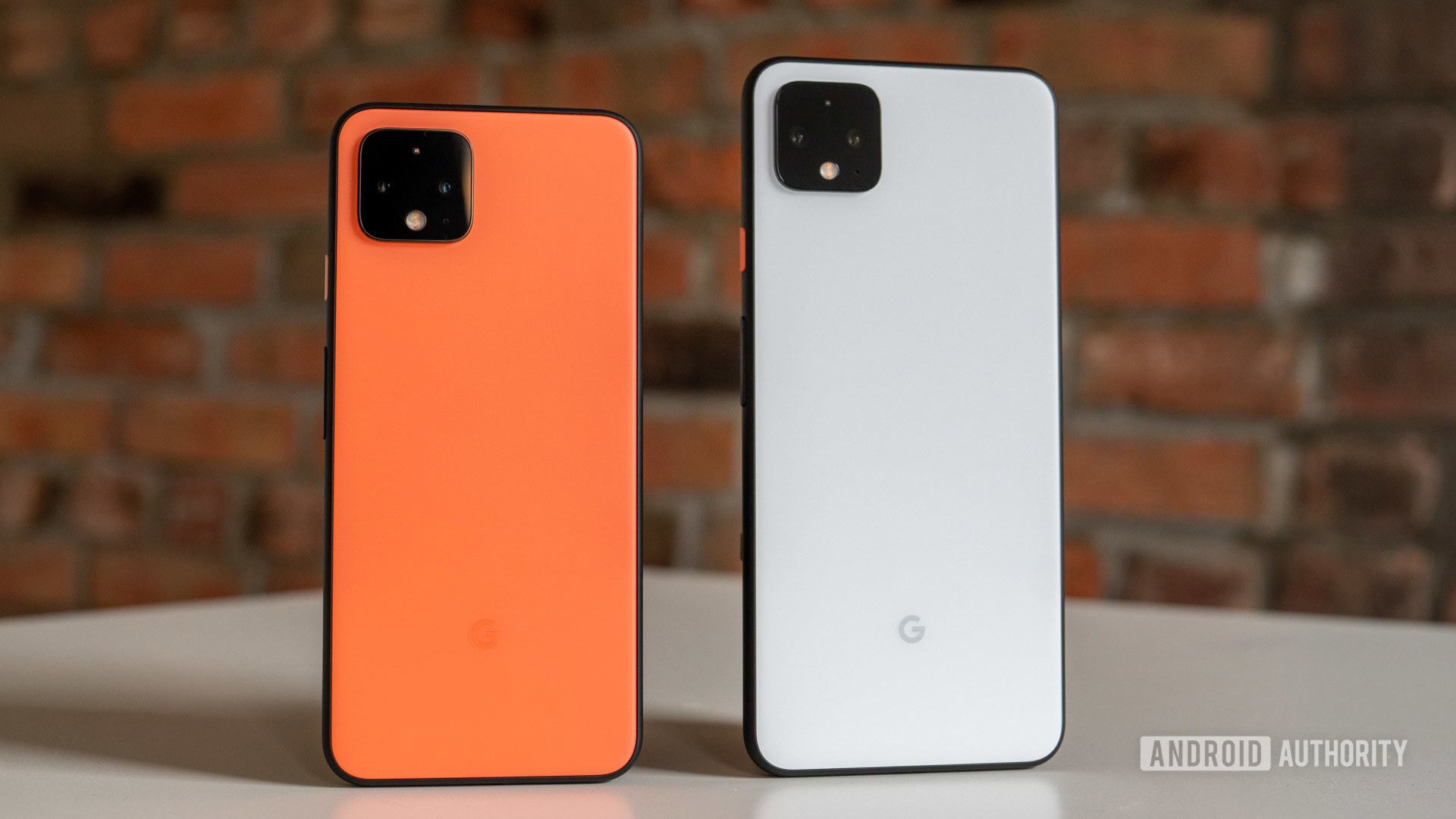
The Pixel 4’s CPU is joined by something a little extra — the Pixel Neural Core. You can read all about the Neural Core and what it does here, but it essentially powers all of the Pixel 4’s AI trickery such as real-time image editing and offline speech transcription through the currently Pixel 4-exclusive Recorder app.
If you’re buying the base model of any of the Pixels you’ll be stuck with a pathetic 64GB of storage and no chance of expanding it with a MicroSD card. This is especially egregious on the more premium Pixel 3 and Pixel 4. You can jump to 128GB, but that’ll cost you another $100 — the worst example of storage gouging from any smartphone OEM. Yes, that includes Apple.
Feeling (and sounding) really good
Moving on to audio, the Pixel 4 has stereo speakers with one in the earpiece and another on the bottom of the phone. This might seem like a step down from the Pixel 3’s front-facing pair, but the overall depth has been improved, as has the clarity at higher volumes. The Pixel 3a has a similar set-up to the Pixel 4 as the weakest of the three, though it does have something pretty great that the others don’t — a 3.5mm headphone jack.
Finally, the Pixel trio all have the handy Edge Sense feature which can summon Google Assistant with a quick squeeze, and they all have some of the best haptics you’ll find in any phone.
Best of the best phone cameras
Google Pixel 4
- Main camera: 12.2MP, ƒ/1.7, OIS + EIS, PDAF
- 2x telephoto camera: 16MP, ƒ/2.4, OIS + EIS, PDAF
- Selfie camera: 8MP, ƒ/2.0, and TOF sensor
Google Pixel 3
- Main camera: 12.2MP, ƒ/1.8, OIS + EIS, PDAF
- Selfie camera: 8MP, ƒ/1.8
- Ultrawide selfie camera: 8MP, ƒ/2.2
Google Pixel 3a
- Main camera: 12.2MP, ƒ/1.8, OIS + EIS, PDAF
- Selfie camera: 8MP, ƒ/2.0
The Pixel brand is synonymous with industry-leading smartphone cameras, all powered by Google’s computational photography algorithms.
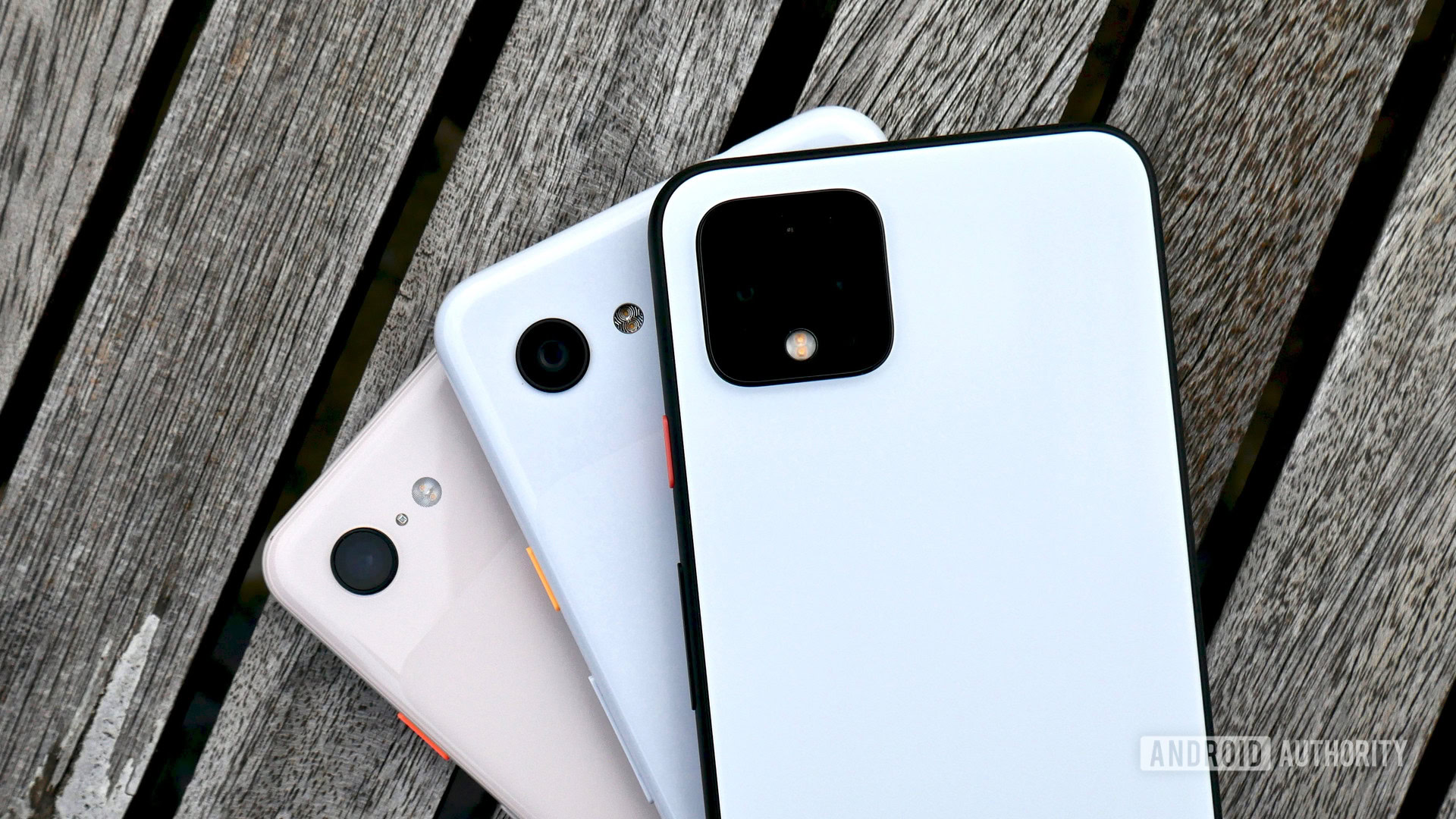
Google has openly admitted that the latter is where the Pixel camera magic really happens. This becomes even more apparent when you realize that the 12.2MP primary sensors on the Pixel 4, Pixel 3, and Pixel 3a are identical, save for a slightly wider aperture on the Pixel 4.
We’ve already examined the advancements made for the Pixel 4 vs the rest of the premium Pixel family in a comprehensive camera shootout. What’s really surprising is that Pixel 3a still offers a comparable photography experience at half the price. Here are a few examples:
White balance and color reproduction is far more true to life on the Pixel 4. The Pixel 4 also produces more detail shots, but there’s no denying all three take dynamic and crisp photos, even in low light where many phones struggle.
Read more: Photography terms explained: ISO, aperture, shutter speed, and more
Night Sight is an interesting case as the Pixel 4 like to readjust the white balance to be much cooler. In the shots below the Pixel 3 and 3a have a yellow hue which matches the orangey glow from a streetlight, while the Pixel 4 transforms it into a white light. You could make an argument for either, but personally I prefer the adjustments made on the Pixel 4.
Of course, we can’t talk about the Pixel 4 camera and not talk about the biggest change the Pixel series has seen so far — the extra rear sensor. Contrary to what seems to be the hopes and dreams of the internet at large, the Pixel 4’s secondary camera is a telephoto lens that supports up to 2x optical zoom.
Google has dabbled with zoom before with the software-assisted Super Res Zoom feature, but this is the real deal. Zoom shots are fantastic on the Pixel 4. Strangely, though, portrait mode is now restricted to only the telephoto shooter, so you might find yourself needing to take a few steps back to grab the perfect bokeh snaps.
It’s also a shame we didn’t get more than just 2x optical, though the biggest gripe for most is the fact Google opted for a telephoto lens instead of an ultra wide-angle camera in the first place. Perhaps the Pixel 5 will have a triple-lens camera. Fingers crossed.
Speaking of wide-angles, the Pixel 3 series actually has a secondary wide-angle selfie camera which was removed from the Pixel 4. It’s understandable that corners had to be cut for the Pixel 3a, but with all that top bezel it’s surprising it didn’t carry over to the Pixel 4. Thankfully, the main selfie shooter is still great.

As for camera features, Google has already confirmed that its stunning ASTRO mode will eventually trickle down to the Pixel 3 and 3a. That’s unlikely to be the case for the real-time image editing tools though, as only the Pixel 4 has the necessary Neural Core.
All in all, you’re going to have a great time taking the camera for a spin on any Pixel phone. If you want the very best the Pixel 4 does edge ahead, though it’s perhaps not the kind of leap forward we’ve seen between previous Pixel generations.
Okay, let’s talk battery life
Google Pixel 4
- 2,800mAh
- 18W fast charging
- USB Power Delivery 2.0
- Qi wireless charging
Google Pixel 3
- 2,915mAh
- 18W fast charging
- USB Power Delivery 2.0
- Qi wireless charging
Google Pixel 3a
- 3,000mAh
- 18W fast charging
- USB Power Delivery 2.0
Oh dear.
If you’ve ever used a Pixel phone you already know that endurance isn’t their strong suit. This was true of the Pixel 3, and it’s especially true of the Pixel 4, which for reasons that only Google knows has a smaller battery than its predecessor.
This is especially baffling when you factor in the power-hungry 90Hz display and the Soli radar tech. The Pixel 4 XL fares better with a larger cell than the Pixel 3 XL and an acceptable (but still not great!) 5-6 hours average screen on time. The smaller Pixel 4, meanwhile, can drop to a measly four hours, and under heavy use as low as three.
Pixel 4 battery life is abysmal.
Funnily enough, it’s the cheapest Pixels that come out on top for battery life, as the Pixel 3a and Pixel 3a XL will take you through at least a whole day without issue.
Each of the Pixels support 18W Power Delivery fast charging. Only the Pixel 3 and Pixel 4 devices have fast charging, though the compatibility is a bit all over the place. Get a Pixel Stand if you want to be safe and get some extra Assistant features.
Look beyond the Pixels you’ll find phones with significantly better battery life at all budgets. At this point it’s pretty clear Google doesn’t prioritize battery longevity when designing its phones.
Sublime software
Google Pixel 4
- Android 10
Google Pixel 3
- Android 9 Pie
- Upgradable to Android 10
Google Pixel 3a
- Android 9 Pie
- Upgradable to Android 10
From one extreme to the other, Google’s attention to detail with its Pixel software is astounding.
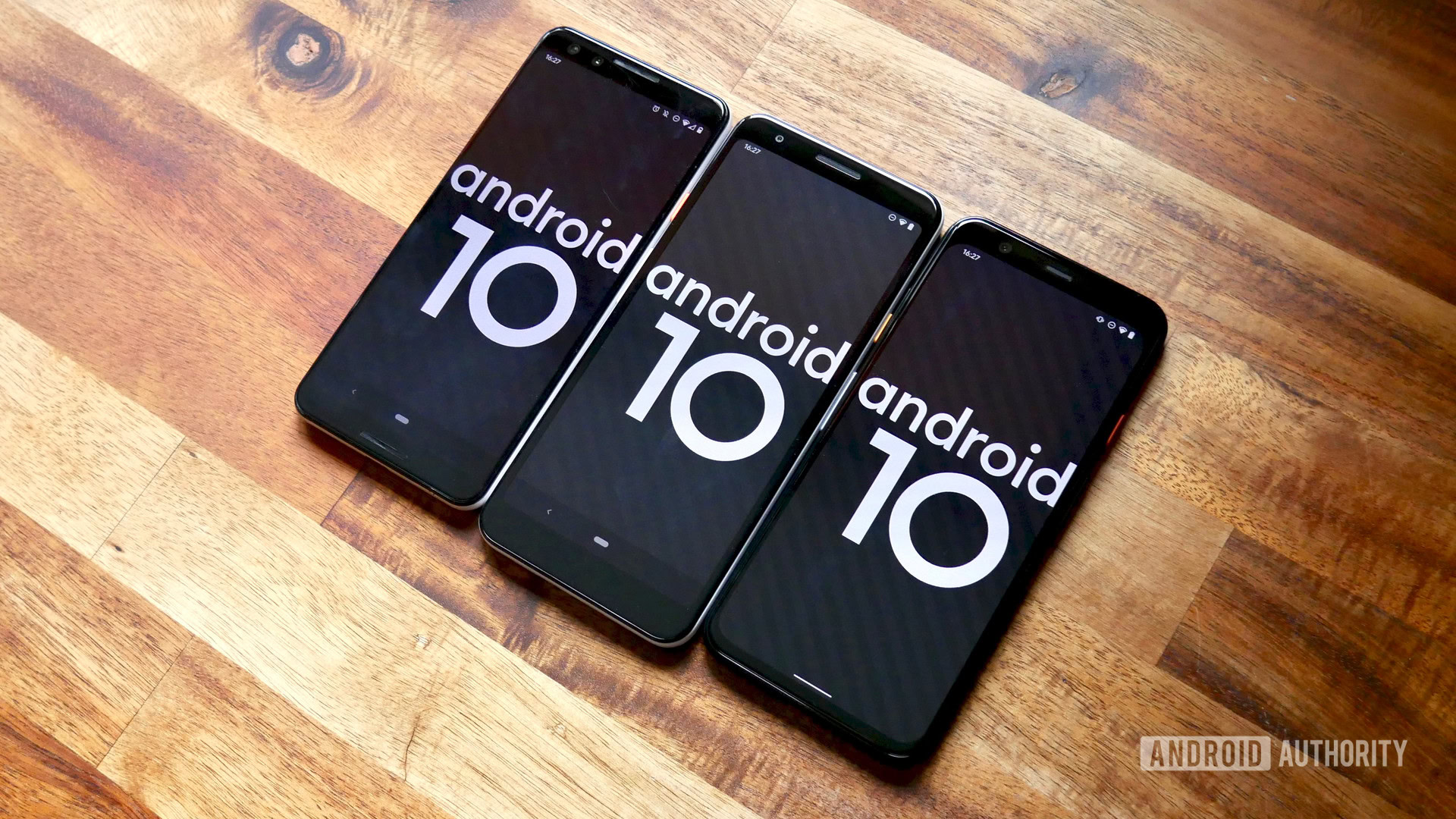
The Pixel experience is Android as Google envisions it — and that vision is rooted in making the entire UX as clean, clinical, and pure as possible.
All three phones have been updated to Android 10, with the Pixel 4 running the desert-free OS upgrade out-of-the-box. You can read about all the new Android 10 features here, though it’s worth noting the Pixel 4 has some extra bells and whistles related to Motion Sense and the Neural Core (such as the Recorder app).
The Pixel software experience is Android as Google envisions it.
Every Pixel is supported for up to three years for major OS updates and security patches. The Pixel 3 enjoys an added bonus of original quality backups to Google Photos until January 31, 2022. The Pixel 3a and, more shockingly the Pixel 4, do not, though the latter does come with a free 3-month trial of Google One with 100GB cloud storage. That’s not quite as good though is it, Google?
Price and alternatives
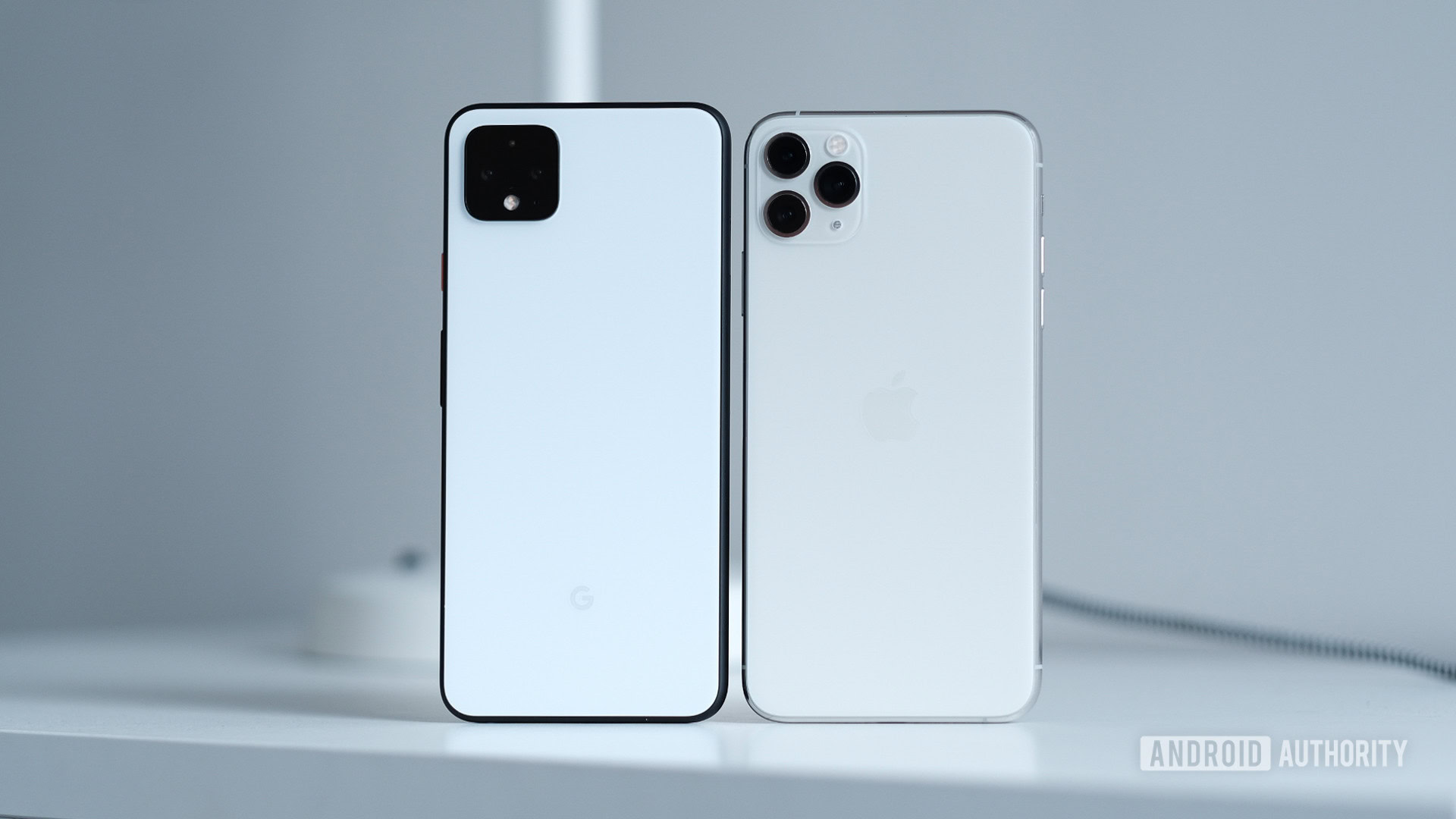
The Google Pixel 4 starts at $799 while the Pixel 4 XL pricing begins at $899. You can check out the full details, including the Pixel series’ newfound wider US carrier availability, at our deals hub here.
The Google Pixel 3 is sold out on Google’s online store, but it has recently dropped to below $500 in sales. Expect to see retailers clear out stock during Black Friday in November and in the run up to Christmas. Finally, the Google Pixel 3a starts from $399.
Not convinced by what Google has to offer? There are plenty of rivals out there to choose from... and not just from Android OEMs.
The Pixel 4’s biggest rivals are the Samsung Galaxy S10 series and the iPhone 11 family. The iPhone 11 Pro, in particular, has a comparable camera and a comprehensive videography suite that is leaps and bounds ahead of the Pixel (just be sure to try out iOS for a while before making a permanent switch from Android).
Meanwhile, there are plenty of more affordable phones with similar or better specs such as the stupidly affordable OnePlus 7T for just $599.
The Pixel 3 and Pixel 3a are in an equally tricky spot if you’re looking solely at a specs sheet, with the Xiaomi Mi 9T Pro being the pick of the bunch. If a great camera is your dealbreaker though, there isn’t much out there that can touch the Pixel 3 siblings.
Google Pixel 4 vs Pixel 3 vs Pixel 3a: The verdict
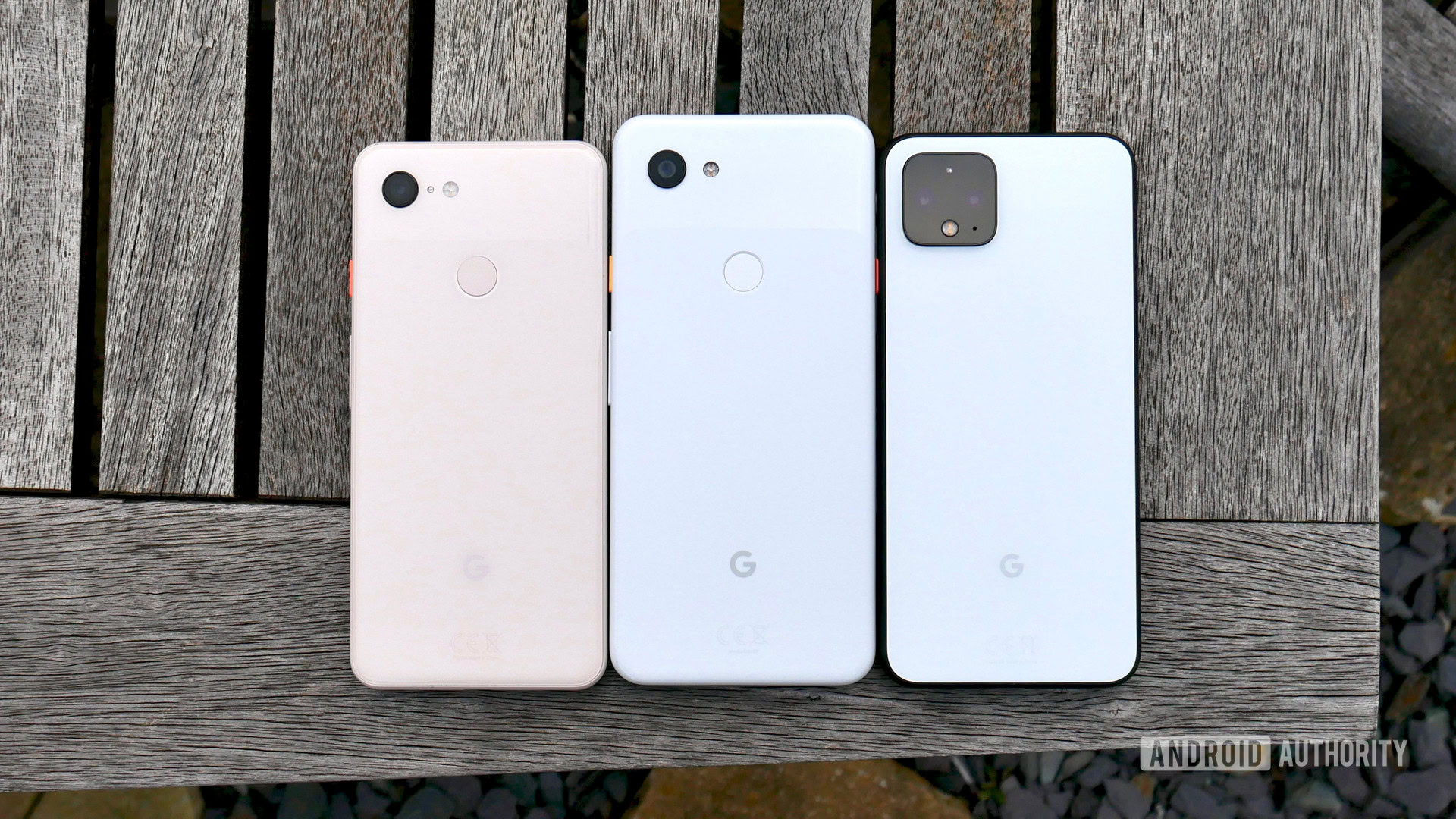
We love the current Pixel family, warts and all. Each has its own (often significant) drawbacks, but it’s easy to forgive when the camera suite and software design is of such a high caliber.
If you want to join #TeamPixel your budget will inevitably determine which device is best for you. Those after a close-as-possible-to-flagship experience on the cheap shouldn’t hesitate to pick up the Google Pixel 3a. It dominates its direct competition on photography and is easily one of the best mid-range phones ever made.
If you can’t stomach the underpowered processor then the Pixel 3 is still a superb buy over a year after its initial release, especially if you’re really into selfies. Likewise, if you can grab a Pixel 3 on sale, you’ll get a fairly sizeable upgrade over the Pixel 3a for only a little bit extra cash.
The Pixel 4 series represents the best and worst of Google.
As for the Pixel 4? Well, the battery life on the smaller model is unacceptably poor, 64GB just isn’t enough base storage, and Soli is clearly a work in progress.
But then you take that breathtaking camera for a spin, glide through the patented Pixel software powered by a blisteringly quick processor and ample RAM, watch your phone unlock after just a quick glance, and feel those haptics and hear the speakers.
The Pixel 4 series represents the best and worst of Google in a smartphone. When it’s at its worst, it’s a nightmare. When it’s at its best, you’ll never want to wake up.
That’s it for our Google Pixel 4 vs Pixel 3 vs Pixel 3a comparison! Which Pixel phone should you buy in 2019? Hit up the poll below and let us know in the comments!